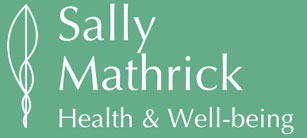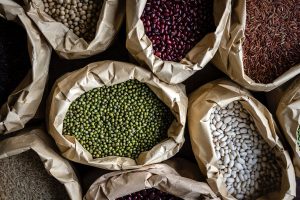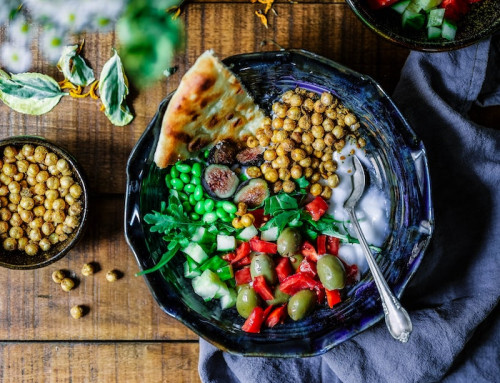The Planetary Health Diet
In January 2019 the EAT-Lancet Commission released a report that identified the way of eating that could nourish 10 billion people on a sustainable planet in 2050. This is definitely the best news I’ve heard about global warming and the future survival of our species, ever.
I play a role in it, and so do you!
The report, “Food in the Anthropocene: the EAT-Lancet Commission on healthy diets from sustainable food systems” is a collaboration of 37 experts from a range of disciplines (human healthcare, agriculture, political science and environmental science) based in 16 nations, which was coordinated by the Stockholm Resilience Centre.
It asks us to rethink the way we consume food.
“This change in thinking should recognise the inextricable link between human health and environmental sustainability and integrate these separate concerns into a common global agenda to achieve healthy diets from sustainable food systems.” – EAT-Lancet Commission
Music to my ears… to me this is sound medicine.
Essentially, the report maps the way in which each of us can contribute to The Great Food Transformation. It describes a Planetary Health Diet, the ‘diet’ that’s good for human health and supportive of the ecosystem too. They map how this method of eating reduces carbon emissions thus impacting global warming. It is a tangible and real way to meet the Paris Agreement on climate change and the Sustainable Development Goals IF WE DO IT.
 As a world wide study, it reports on the current imbalances across the planet.
As a world wide study, it reports on the current imbalances across the planet.
It highlights the stark contrasts between the sad facts that 820 million people go hungry every day and 150 million children have impaired growth and development due to malnutrition, and the fact that over 2 billion adults are overweight or obese, and suffer from diseases because of it. Another recent, huge study, the Global Syndemic of Obesity, Undernutrition and Climate Change looked wholistically at the underlying systems that perpetuate all three, interwoven problems, essentially suggesting a paradigm shift is required to overcome these issues. And these aren’t hippies calling for us to all cooperate and love each other, these are papers written by highly credentialed, world renown academics calling for us to be responsible, intelligent and to love each other (though they don’t put it quite like that).
Pardon the pun, but these are big problems.
The Planetary Health Diet is a systems based solution that empowers each of us to make a real difference in the future trajectory of the world.
It considers:
It is a flexitarian approach to eating, not vegan nor vegetarian, though you can be if you like. The diet can be varied depending on your tastes, food availability, season, local interpretation and adaptation, cultural influence, geography and demography of the individual. The diet is predominantly plant based, highlighting the consumption of fruits, vegetables, nuts and legumes. You might immediately think, ‘boring’, however with over 30,000 known edible plants there’s no limit to the interesting options to taste and explore.
There’s great adventure and rediscovery of food inherent in this way of eating.
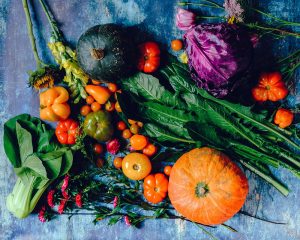 The diet includes modest amounts of animal sourced foods, including a fair amount of fish, and meager amounts of meat and eggs and optional dairy. It highlights that where food comes from is a very important factor for sustainability, and advises on supporting local or sustainably grown foods and beverages.
The diet includes modest amounts of animal sourced foods, including a fair amount of fish, and meager amounts of meat and eggs and optional dairy. It highlights that where food comes from is a very important factor for sustainability, and advises on supporting local or sustainably grown foods and beverages.
Purchasing from regenerative farmers has real impact in the short term, and also influences and shapes the market through demanding more whole, health giving foods. It encourages giving preference to farmers who are actively supporting biodiversity too.
Red meat has a very heavy environmental foot print – in terms of land use (grazing land instead of forests), biodiversity loss and excess greenhouse gases, from both methane and cost of stock feed production and transport. Currently 2/3 of soy, maize and barley and 1/3 of grains grown around the world are fed to livestock.
The diet highlights the need for a significant reduction in the over consumption of unhealthy foods, namely processed and junk foods. So, if shopping at a supermarket, this essentially means skirting along the outside walls where the fresh foods are shelved.
Not overeating is important too. They suggest sharing food with family and friends and taking your time over meals will support reduction in overeating. Also choosing single servings portions is another easy way to avoid overeating.
Planning meals in advance is a key way to ensure there’s diversity and deliciousness. It also saves time and money. Get some of your parents, grandparents, aunts and uncles recipes to try out and teach others of your success. Store leftovers in reusable containers for subsequent meals is really in terms of reducing food wastage. Lessening food waste is really impactful to global warming. Learning and actioning correct composting techniques has impact too.
If adopted, this way of eating can:
- Prevent the premature deaths of 11 million people per year
- Drive the transition towards a sustainable global food system by 2050
Environmentally, eating along these guidelines will improve:
- Water management
- Nitrogen and phosphorus flows
- Land use and Biodiversity
- Soil health and biodiversity
- Greenhouse gas emissions
The report doesn’t explore in any depth the impact of agricultural chemicals nor genetic engineering, though does acknowledge theses oversights. It’s true that much of the knowledge in the report has been maturing in different pockets – such as regenerative farming, Permaculture, Project Drawdown, Slow Food Movement, Farmers Markets and Local Futures, Plant food and whole food diets of the 1970s etc etc. The beauty of the EAT-Lancet is its successful collation of these knowledge areas into a system of eating that can be adapted to most people most of the time. And at a time when we can still do something about it.
We certainly have the solutions. We just need to action them. Like, now.
Overview of Nutrition in the Planetary Health Diet*
| FOOD GROUP | MACRONUTRIENT INTAKE
gm/day range |
What that can look like | Caloric intake (kcal) per day based on 2500kcal/day |
| Carbohydrate sources
Whole grains: Rice, wheat, corn and other |
232 | 2 slices wholegrain toast + ½ cup quinoa +1/2 cup brown rice | 811 |
| Carbohydrate sources
Tubers or starch vegetables Potatoes and cassava |
50 (0-100) | ½ small potato, small beetroot, 1 tbsp parsnip per day | 39 |
| Vegetables
All vegetables |
300 (200-600) | Around 4 portions per day | 78 |
| Fruits
All fruits |
200 (100-300) | 2-3 pieces of fruit a day | 126 |
| Dairy foods (optional)
Whole milk or equivalents |
250 (0-500) | 153 | |
| Protein sources
Beef, lamb and pork Chicken and other poultry Eggs Fish Legumes Nuts
Proteins from plants where possible. |
14 (0-28) 29 (0-58) 13 (0-25) 28 (0-100) 75 (0-100) 50 (0-75) |
Red meat:1 burger or one steak per month 1 egg every 3-4 days ¼ salmon fillet or ¼ chicken breast, ½ small tin of tuna. 10 Brazil nuts, ½ cup almonds, 12 walnuts, 25 cashews 1/3 tin of chickpeas or lentils
|
Meat -30 Poultry – 62 Egg -19 Fish -40 Legumes -284 Nuts – 291 |
| Added fats
Unsaturated oils (including omega 3) Saturated oils |
40 (20-80) 11.8 (0-11.8) |
354 96 |
|
| Added sugars
All sugars |
31 (0-31) |
120 |
*Vulnerable groups such as expecting mothers, children and adolescents, and people suffering chronic diseases will need special consideration and many adjustments to these nutrient guides.
The recently released Canadian food guide has a similar approach, in stark difference to conventional national food guides which have been directed more by industry than is perhaps healthy…
Three key guidelines in the Canadian food guide describe: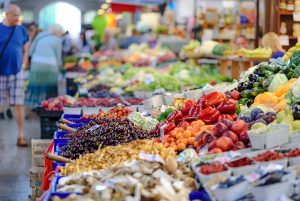
- What to eat regularly
- What to avoid
- The importance of cooking and preparing food at home
Not surprisingly, these guidelines suggests consuming more fruits and vegetables, wholegrains foods and proteins from plants, and way less sugar, salt and saturated fats (ie processed foods).
It encourages people to read food labels if they are eating foods that come in packages. They also see that dietary guidelines are about more than what you eat, but also about how you eat. It recommends mindful eating, eating with others and enjoying your food. Being wary of food marketing is another aspect. We know that “nutrition wash” is all too common.
Both EAT-Lancet and the Canadian guidelines empower us with the knowledge that every meal can have a direct impact on global warming and the health of our planet. Exactly how to apply and eat in this way is a process that many of us need to learn to master.
===
Join the group Nourish Course to dive into how to apply the Planetary Health Diet for healthy weight management (and healthy planet management)!! Read more details on Nourish Course.
